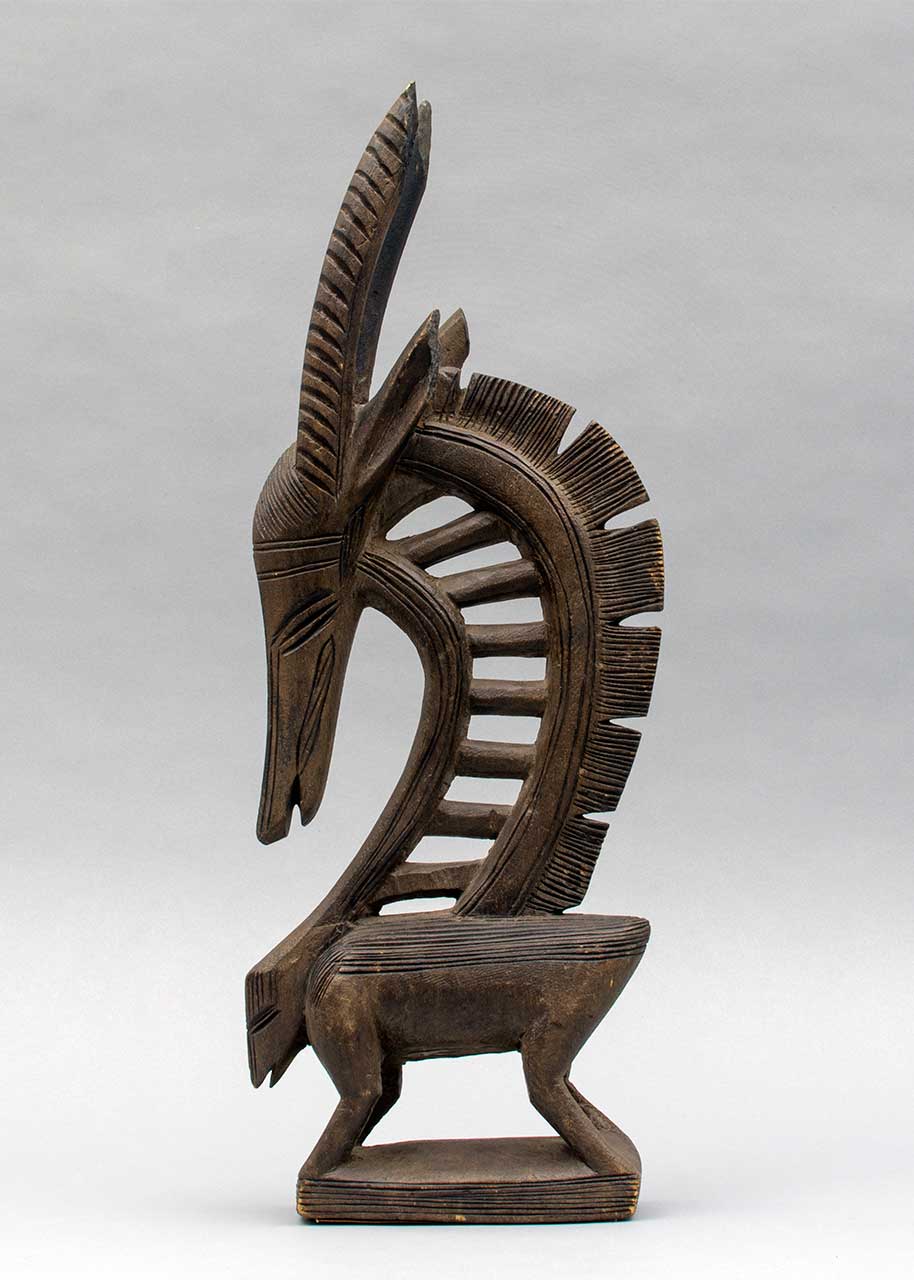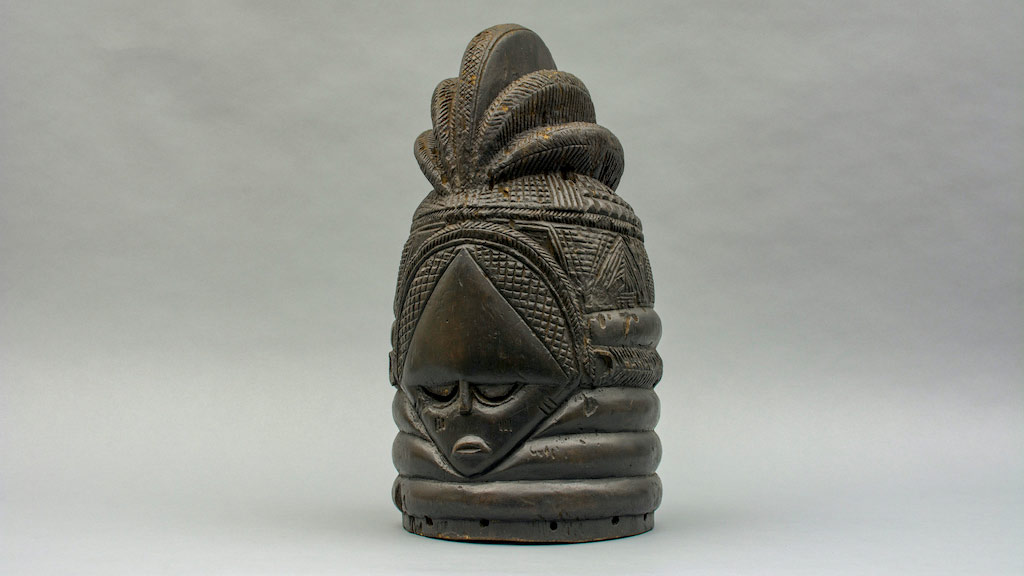
The African Gallery: Ci Wara
- Post Date: 3/25/2022
- Author: Bethany Johnson, former registration student assistant
- Reading Time: 4 minute read
The continent of Africa can appear to be full of cultures that are very different from Western mindsets and practices. Because of the history of the African Diaspora—a term used to describe the spread of Africans to the Americas and Europe through the transatlantic slave trade—many people of African descent are unable to trace their heritage to any one African culture. But some have a desire to connect to the background and history that has been stripped from them. Even with a desire to connect to Africa, it can still be difficult for those who are part of the Diaspora to relate the African artifacts in the Spurlock Museum’s collection to their own lived experiences. And when people can’t relate to something, they may lose interest in it.
The Ci Wara
There are examples at the Spurlock Museum that can help to recontextualize aspects of traditional African cultures. One is the Ci wara headdress (or Chiwara) (1990.10.0014). The term Ci wara itself means “wild animal that works”; the headdress portrays a mythical half-man, half-antelope figure and is worn in Mali by the Bamana people to celebrate farmers in their society.
Ci wara masquerades are part of the traditional religion of the Bamana people in Mali. May to October is the rainy season in Mali, and in this time enough food must be grown to last the year. Early in the rainy season, the annual Ci wara masquerade is held to celebrate farmers, as farming is seen as a noble occupation. The Bamana rely on agriculture to sustain their community, and oral traditions credit Ci wara with bringing agriculture to humanity. The Ci wara mask has become so well known in Mali that it has become a national symbol for the country itself, representing the continuity of the community. It is central to the ideals and practices of the Bamana people.
But how can an African American relate to this? The African-American artist Willie Cole explored this idea when he learned about the Ci wara mask in high school in the late 1960s and early 1970s, the era of the rise of the black consciousness movement. Cole studied the Ci wara mask as a part of a school assignment, and this later inspired him to create a Ci wara out of bicycle parts.
“Ci wara means ‘work animal,’ and in America the bike is a work animal,” Cole said in an interview with the Metropolitan Museum of Art in New York. He said that without his education, he would have no idea about African art. This led him to contemplate what the term “African American” means to him, and began to make “African art out of American objects.” Cole is a descendant of the Diaspora trying to understand the complexities of his identity and finding ways to see himself in both African and American art.
However, an understanding of African art and objects doesn’t have to be as complex or concrete as Cole’s. It can be as simple as finding small similarities between your culture and African culture. Cole is just one person who shows the importance of education on understanding the continent of Africa, especially for those of the Diaspora. Identity can be a complex concept to grasp, but there are many ways appreciate it.
-
 1990.10.0014 Side view of the Ci Wara Headdress
1990.10.0014 Side view of the Ci Wara Headdress
-
- Share:
- Subscribe to Newletter
- Giving

